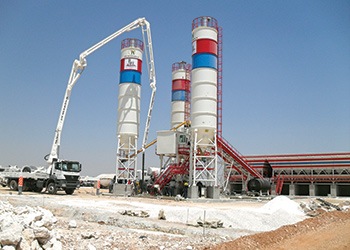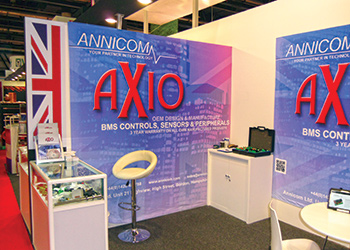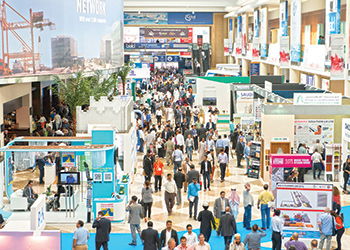

Mechanical services installations can have a huge effect on roof design. JOE ROSE* of Big Foot Systems explains the challenges and details the solutions that the company will be exhibiting at The Big 5 show.
For the Dubai construction market, non-penetrative rooftop support systems tick all the right boxes and the UK-based Big Foot Systems leads the way, offering the largest range in
the world.
Big Foot Systems will be showcasing its non-penetrative rooftop support systems for mechanical services and safe access equipment, demonstrating the many benefits these solutions can bring to modern construction, at The Big 5 show.
Visitors will be able to see how quick and easy these systems are to assemble and how they provide excellent support for HVAC (heating, ventilation and air-conditioning) plant and safe access systems whilst maintaining the integrity of modern roofs.
Visitors can also learn about Big Foot’s technical services and hear how its technical expertise allows it to work with its clients to design solutions to their construction challenges. To ensure the correct support solution for each project, Big Foot Systems offers a professional service with technical support underpinned by 3D CAD and a full quotation facility. In addition, with the aid of its technical department and by using our Ansys FEA software, Big Foot Systems can also offer custom-made one-off solutions to meet the demanding environment present on some of today’s roofs.
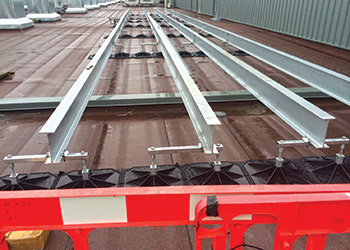 |
Big Foot Systems ... installed in a range of projects worldwide. |
Mechanical supports design
In today’s congested cities, space is at a premium and nowhere more so than inside a building which has a very high value for the end client. With mechanical services installations a necessary commodity for the modern building, flat roofs are the most logical location and easiest place to install these services. But location is not the only consideration. With increasingly technical air movement and temperature control systems being installed on flat roofs, considerations include more complex designs, higher imposed loads on the roof, the implications of the installation on the roof and how it can manage the load. There are also further considerations such as the roof finish and potential waterproofing issues which all must be addressed.
Unnecessary complications can be avoided by fully considering mechanical services support at the design stage of the construction process. If this is overlooked, a mechanical contractor may be left on site with no stands or plinths to mount the mechanical equipment on, no design brief or guidance. As a result, the finished roof can be put at risk due to potential penetrations through the roof to secure supports or rips and tears of single-ply membrane.
The simplest and easiest solution to such installation problems is to use non-penetrative supports. In addition, due to the nature of the product, they can be designed in from the start of the project or retrofitted at any point during the construction of the building. Building information modelling (BIM) is now helping architects and designers consider the installation and support of mechanical services early on. It offers building owners clarity and also highlights any snags during the design stage where options can be easily changed rather than picking up conflicts later on site where solutions can prove more costly.
Big Foot Systems prides itself on its technical expertise and in-house design skills and it made sense for the company to adopt BIM as another way to offer designers any help they need to make specification simple.
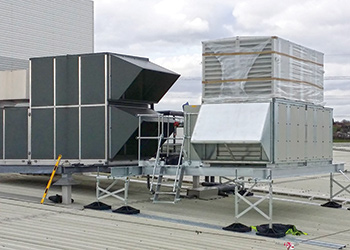 |
The system has also been installed on a five-degree pitch. |
Retrofit
Non-penetrative solutions are also ideal for retrofit installations where a roof is finished or a refurbishment of mechanical equipment is taking place. Non-penetrative solutions can be designed and applied around any objects, obstructions or existing installations that wouldn’t be possible with traditional techniques.
Ideal for both new-build installations and retrofitting, non-penetrative systems are quick and easy to install, ensuring project cost and time clarity, negating a need for time-consuming and costly penetrations through the roof in the form of poured or precast concrete plinths, steels or fabrications.
Traditionally, concrete has often been used when mounting cooling equipment on conventional flat roofs as a simple, cheap, support solution. At first sight, this might appear an acceptable installation option. However, instead this installation solution can cause expensive long-term problems when used on delicate modern flat roofs. Placing concrete directly on a flat roof with a single-ply membrane can tear through the membrane, which can lead to destructive roof leaks and costly damage. Such concrete plinths can also prevent drainage of water from the roof, causing ponding and issues elsewhere.
Another traditional solution for mounting heavier plant on flat roofs is opting for steel fabrications, penetrating the roof membrane at specified points. However, this is a costly and time-consuming process, requiring detailed design of the fabrication by a steel fabricator and involving remedial works to seal the new roof around the penetrations created to finish the installation. Using these traditional penetrative support systems on flat roofs may also compromise roof integrity, causing thermal bridging, possible leaks, or potentially affecting roof warranty requirements.
In contrast, non-penetrative support systems have the advantage of maintaining the integrity of the roof membrane, thus avoiding thermal bridging and the potential for moisture ingress. Currently, many in the construction industry are still unaware of the benefits of the non-penetrative frameworks that Big Foot Systems can offer such as: reduced programme complexity and significant savings on materials and labour costs. This apart, these systems reduce the risk of roof leaks and thermal bridging, both which have a cost implication for the building owner.
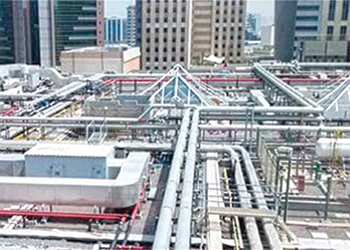 |
Deira City Centre ... rooftop view. |
Projects
Big Foot Systems has been active in Dubai with its non-penetrative support systems installed in a selection of projects including the Mall of the Emirates and Deira City Centre.
The rooftop of the Deira City Centre is a complex maze of pipes and plant. However, Big Foot’s non-penetrative supports were easy to install around existing objects. Here, Big Foot’s frames were used to support pipes on the rooftop. The finished result was an installation that was neat, secure, stable and makes rooftop maintenance easier and safer.
In another interesting project, Big Foot Systems designed a non-penetrative support system in the UK. Due to the lightweight roof structure and proposed roof finish, the very heavy units could only be installed on the roof by managing the load through the purlins and roof steels in the structure.
Utilising large longitudinal steels to support the units and then an array of feet over the roof steels, this solution manages the very high loads created by the units through the building. This design was considered from the initial design stages with the architects and structural engineers as they had proposed to use a very lightweight roof construction for the project.
This installation was designed and installed in a matter of weeks, giving the client and customer a robust load management system that also didn’t affect the waterproofing of this lightweight roof. Utilising braced legs with angled feet, the system was also installed on a five-degree pitch.
Big Foot Systems will be at Stand 2 B61 at The Big 5 show.
• Joe Rose is technical marketing manager at Big Foot Systems and a qualified design engineer.





















_0001.jpg)


.jpg)
















.jpg)








.jpg)



